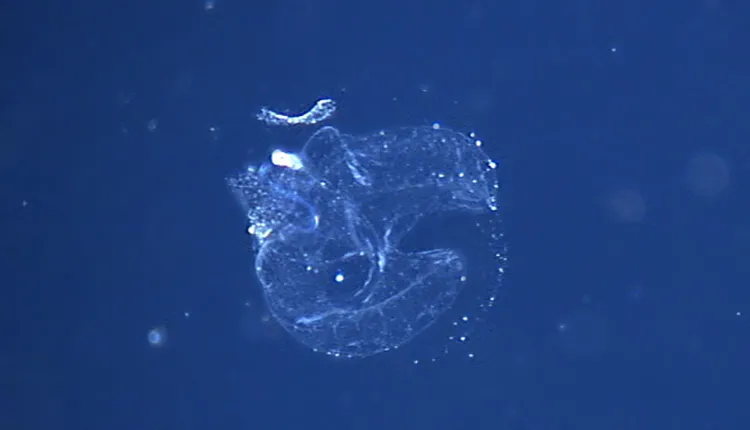Main Image of....
....three species of tunicates ("sea squirts") - Polycarpa aurata is purple and orange, Atriolum robustum is green, and the blue is from the genus Rhopalaea. (Nick Hobgood)
There are around 3000 species of Sea Squirts aka Tunicates!
Above, Corella parallelogramma by Mark N Thomas
They are found in salt water throughout the world!
They are our closest invertebrate relatives!
Above, Photo by Chas Anderson
They are called Sea Squirts because if they are touched or alarmed the muscle will suddenly contract forcing the water inside to shoot out!
Sea Squirt larvae look like frog tadpoles!
Above-
A deep-water larvacean (aka “sea tadpole”) inside its mucous “house,” which concentrates food from the water prior to reaching the animal’s mouth. (Hidden Ocean 2005, NOAA)
As larvae they swim around in the ocean current, and when they find a food rich environment they use sucker to attach to a rock, dead coral, boat dock, or mollusk shell!
Above, Photo by prilfish
Then they begin metamorphosis!
Above-
Tunicate larvae resemble tadpoles (developing frogs). (Van Name, 1945)
Their notochord begins to shrink and is absorbed into the body, the tunic forms as the transformation continues and finally it becomes an adult Sea Squirt!
As an adult it will now feed on tiny particles found in the water, primarily bacteria!
Above, Blue Bell Sea Squirt (or Tunicate) - Perophora namei by Jim Greenfield
There are two types of sea squirts- solitary and colonial!
Both have 2 siphons. The Oral Siphon receives the nutrient content in the water, and the Atrial siphon excretes the waste!
Colonies are formed when a newly settled larvae changes into an adult. It then splits or 'buds' producing new individuals!
Above, Clavelina sp. by Jim Greenfield
Colonies can range from a few centimetres to several metres depending on food supply and predation!
Colonial Sea Squirts share a common tunic and sometimes and also sometimes share the atrial siphon!
They have a digestive system similar to ours, complete with an esophagus, stomach, intestines and a rectum!
Sea Squirts act as ocean purifiers, as they consume bacteria. They can also absorb zinc and vanadium, indicating heavy metal presence within their ecosystem!
Above [An obligatory Nudibranch!], Striped sea slug snacks while strolling on a sea squirt by Nick Hobgood
All photos and info found here, except where indicated!
And as always my usual disclaimer- I'm not an expert in anything, I just enjoying finding and sharing interesting things.... Any mistakes are mine and I'll correct them if you let me know in the comments 👍
edit re-uploaded main image as it wasn't showing
edit 2 changed 'ancestors' to 'relatives' in the title








